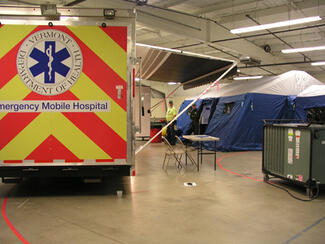The Health Department's Mission is to Protect and Promote the Best Health of All Vermonters.

The Preparedness Cycle

The preparedness cycle is a way to help people and communities get ready for emergencies. It begins with planning, where people make a plan for what to do if something goes wrong, such as knowing where to go during a fire drill. Next comes organizing and equipping, which means getting the right people and tools ready — like checking that fire alarms work and making sure folks know their roles. After that, everyone trains by learning what to do in an emergency. Then it’s time to exercise the plan by practicing it, such as doing a fire drill to see how well the plan works. Finally, everyone evaluates and improves, talking about what went well and what could be better next time. When that’s done, the cycle starts again with new and improved plans. This way, everyone keeps learning and stays prepared to handle emergencies safely and calmly.


